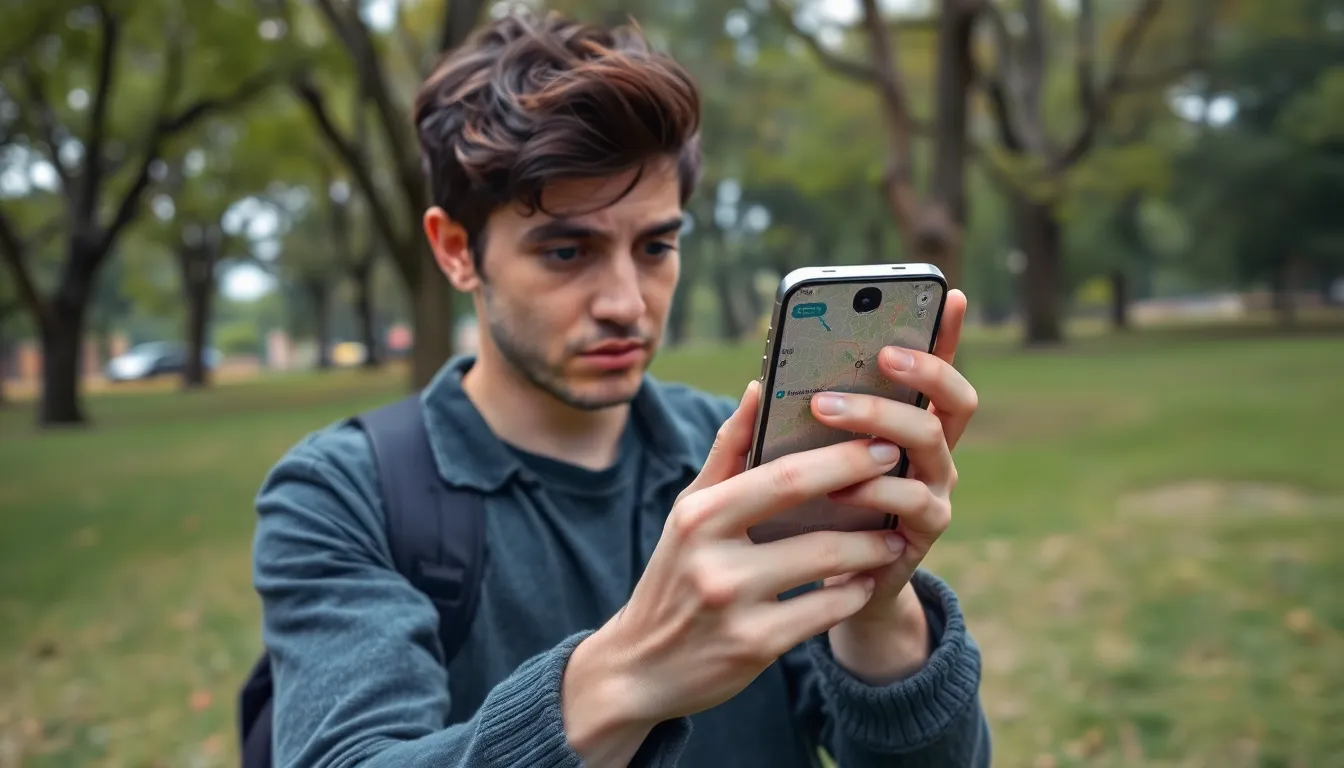Picture this: you’re frantically searching for your iPhone, and the panic sets in. You can almost hear it whispering, “Find me if you can!” But what happens when the dreaded “Find My iPhone” feature is turned off? Can that sneaky little device still be tracked, or is it playing hide and seek for good?
In a world where our phones seem to have minds of their own, it’s crucial to understand the ins and outs of tracking your device. Spoiler alert: if your iPhone is off, it’s not going to send you a postcard from its secret vacation spot. But fear not! There are still some tricks up your sleeve. Let’s dive into the mystery of tracking your iPhone when it’s off and uncover the options available to you.
Table of Contents
ToggleOverview of Find My iPhone
Find My iPhone serves as a valuable tool for tracking Apple devices. The feature aids users in locating lost or stolen devices, offering peace of mind in stressful situations.
What Is Find My iPhone?
Find My iPhone is an integrated service within Apple’s iCloud suite. This feature enables users to locate their devices through GPS, Wi-Fi, or cellular networks. It allows for remote actions, such as playing a sound to locate a nearby device or marking a device as lost, which displays a custom message on the screen. The utility extends beyond locating just iPhones; it also works for iPads, Macs, Apple Watches, and AirPods.
How Does It Work?
Find My iPhone operates using location data transmitted from the device. When the service is enabled, the device sends its location to Apple’s servers regularly. Users can access this information via the Find My app on another Apple device or through iCloud.com. Device locations remain updated as long as it is powered on and connected to the internet. Once the device goes offline, its last known location remains on the map for a limited time, aiding in recovery attempts.
Can You Track an iPhone When It’s Off?

Tracking an iPhone when it’s off poses challenges. Understanding device connectivity provides clarity on this issue.
Understanding Device Connectivity
An iPhone relies on various connectivity options, including GPS, Wi-Fi, and cellular networks, to transmit its location. The Find My iPhone feature functions only when the device is powered on and connected to the internet. When an iPhone is offline, these connectivity options become unavailable. This unavailability halts the transmission of location data to Apple’s servers. Users can access the last known location through the Find My app, but this information may not help if the device is turned off for an extended period. Thus, recognizing how connectivity influences tracking becomes essential for effective recovery strategies.
Limitations of Tracking
Tracking a powered-off iPhone is impossible through standard methods. The Find My iPhone feature can only provide the last known location just before the device lost connectivity. If a device is turned off, it cannot send new location data. Additionally, battery depletion limits tracking options since the iPhone becomes entirely unresponsive when the battery dies. Privacy concerns also play a role in tracking limitations. Apple implements safeguards to protect users’ data, which means that tracking functions will deactivate under specific circumstances. Exploring alternative recovery methods gives users a better chance of locating their device when it’s unreachable.
Alternatives to Track a Lost iPhone
Losing an iPhone can be distressing, but other methods exist for potential recovery when “Find My iPhone” is off.
Using GPS Tracking Apps
Trackers like Life360 or Glympse provide additional options for locating lost devices. These apps require installation on the iPhone beforehand for effective tracking. Sending location updates relies on the device’s Wi-Fi and cellular connections. Users can share their locations with family and friends, enhancing the chances of retrieval, especially if the device goes offline. Active monitoring before losing the phone proves essential. Ensure app notifications are enabled for real-time updates, and users may receive alerts if they stray from designated geofenced areas.
Leveraging Apple Support
Contacting Apple Support can guide users through the recovery process. Representatives offer assistance in locating a powered-off iPhone through advanced troubleshooting steps. They may provide insights into potential recovery methods and advise users on necessary precautions for future scenarios. Users should prepare to provide their device’s serial number and account information for a quicker resolution. Utilizing Apple’s extensive resources, including online support documents and forums, adds another layer of potential solutions. Devices registered under AppleCare might qualify for additional support options, offering further recovery assistance.
Preventive Measures for iPhone Tracking
Taking proactive steps enhances the chances of locating an iPhone, even if it goes offline.
Enabling Find My iPhone
Activating Find My iPhone is crucial for tracking the device. Users can do this by navigating to Settings, selecting their Apple ID, and tapping on Find My. This feature not only allows users to locate their iPhones but also offers options like playing a sound or marking the device as lost. Once enabled, it becomes easier to track the device’s last known location. Verifying the status of this feature should happen immediately after purchasing an iPhone. Ensuring it’s activated on all Apple devices linked to an Apple ID also boosts tracking efficiency.
Ensuring Battery Health
Maintaining battery health is essential for consistent tracking capabilities. Regularly checking battery performance can prevent unforeseen shutdowns that impede location tracking. Users should charge their devices promptly and avoid letting the battery run down completely. Employing features like Low Power Mode during low battery life can extend usage. Additionally, users can disable background apps to save battery resources. Investing in a quality charger helps prevent battery depletion due to faulty equipment. Keeping the device updated with the latest software can also improve battery performance and overall functionality.
Tracking an iPhone that’s turned off presents significant challenges. While users can’t access real-time location data, understanding alternative recovery methods can make a difference. Utilizing GPS tracking apps and leveraging Apple Support are practical steps to enhance the chances of locating a powered-off device.
Moreover, taking preventive measures like enabling the Find My iPhone feature and maintaining battery health can help avoid these situations in the first place. By staying proactive and informed, users can navigate the stress of losing their device with greater confidence.




